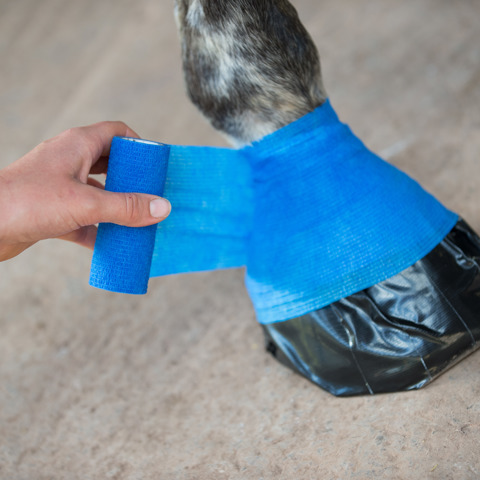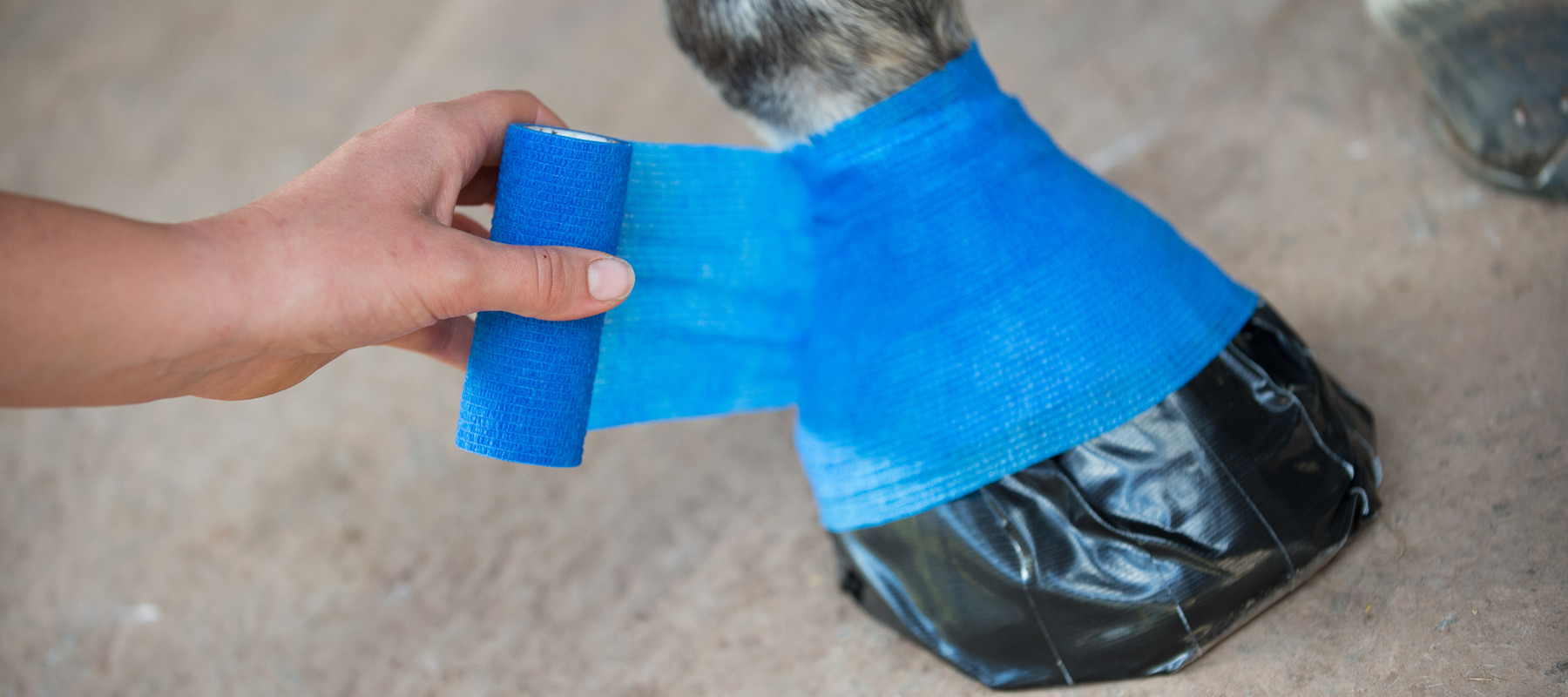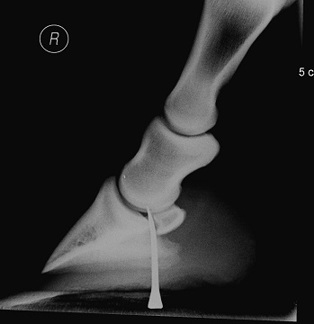What should I look for?
The degree of lameness presented by a horse with a hoof penetration injury varies depending on the location, how deep the object is and how long it’s been embedded. In most cases, the horse won’t be able to put any weight on the affected hoof and can appear “hopping” lame. The opposite limb may also be swollen due to carrying the additional weight.
Some penetrations may not be so obvious — for example, when the object has come out of the hoof on its own and the horse isn’t showing any signs of lameness. In this instance, it’s important to routinely monitor for signs of infection. If you’re worried phone your vet - they may ask you to send them photos.
What should I do?
Ideally, you must leave the offending object in place and support the leg with a bandage while a vet is called. With the object still in place, further investigations such as X-rays can help establish the extent of damage to the internal structures of the hoof.
Appropriate and rapid veterinary action allows treatment to be given before any infection develops and can greatly improve the outcome. Less severe penetrations can be removed by a vet and are often treated by cutting away damaged tissue, bandaging and poulticing. However, structures that are potentially affected include the pedal bone, navicular bursa, the digital tendon sheath and the deep digital flexor tendon. Objects penetrating a synovial cavity, for example, the navicular bursa, have a more uncertain outcome and require surgery to clear out debris and flush out contamination2.
Antibiotics may be given, and careful use of pain relief made without masking signs of any deteriorating lameness. This type of injury is a recognised risk factor for tetanus, so it’s vital to make sure that your horse’s tetanus vaccination is up to date1.
How do I prevent it?
To prevent penetration injuries, pick out feet regularly and check for any objects. Keep fields and yards clear of rubbish and clear up well after replacing fencing or making repairs. Sweep up well after the farrier has seen your horse, in case any nails have gone astray.
References
- XL Vets Equine. (2019) Penetrating Foot Wounds.
- J. A. Findley et al. (2013). Outcome of horses with synovial structure involvement following solar foot penetrations in four UK veterinary hospitals: 95 cases. Equine Veterinary Journal ISSN 0425-1644
Get in touch – we’re here to help
The Horse Care and Welfare Team are here to help and can offer you further advice with any questions you may have. Contact us on 02476 840517* or email welfare@bhs.org.uk – You can also get in touch with us via our social media channels.
Opening times are 8:35am - 5pm from Monday – Thursday and 8:35am - 3pm on Friday.
*Calls may be recorded for monitoring purposes.



